After the 1st Presidential Debate of 2024, Jon Stewart quipped “I need to call a real estate agent in New Zealand!”. He’s right, but in our view, for reasons other than US politics. Namely, topographic beauty and fine wines. Check out this otherworldly video we took of Milford Sound in the South Island:
And this view from the vineyards of Waiheke Island, with the city of Auckland in the distance:
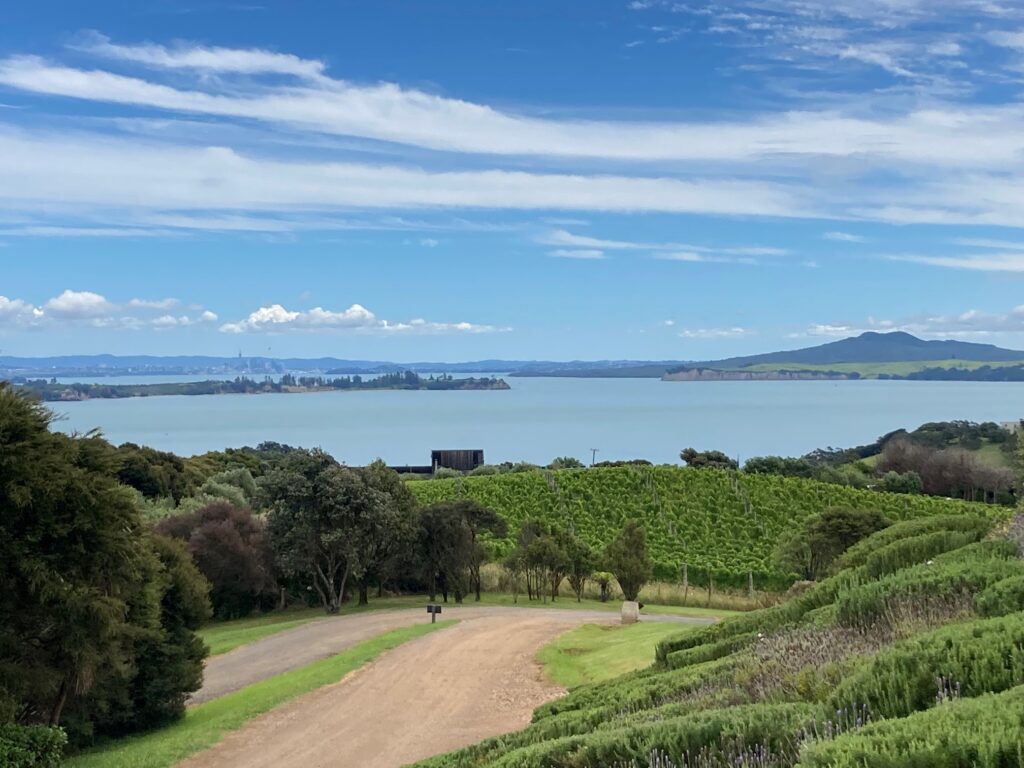
These visuals were shot in January of this year when Trish and I cruised the South and North Islands of NZ. Our ports of call allowed for tasting many of the local wines – some, but not all, are exported to the US and are noted as such in this post. Should you go to NZ (and we highly recommend it), we hope this post will help your wine-buying while there.
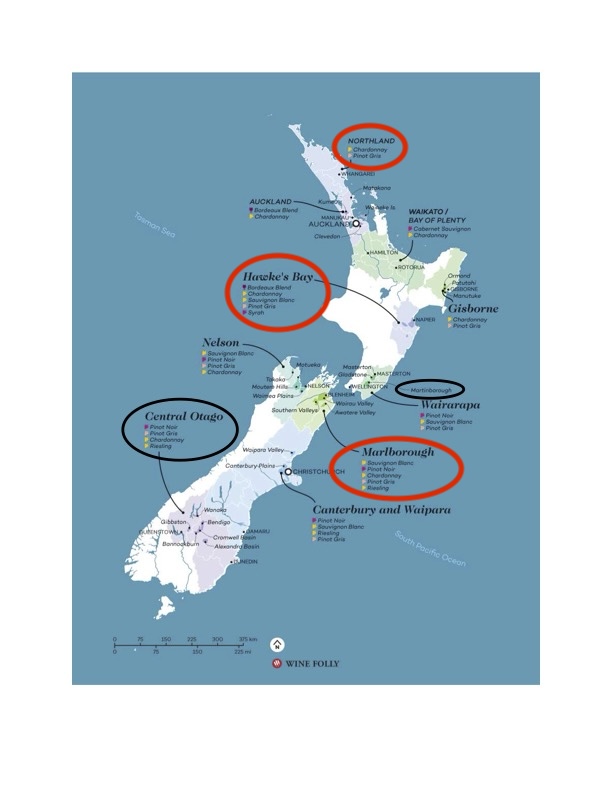
Pinot Noir
Pinot Noir is cultivated in a number of regions from Hawke’s Bay in the North Island to the southern reaches of the South Island. We particularly favored a few producers from Martinborough and Central Otago (black ellipses on the map).
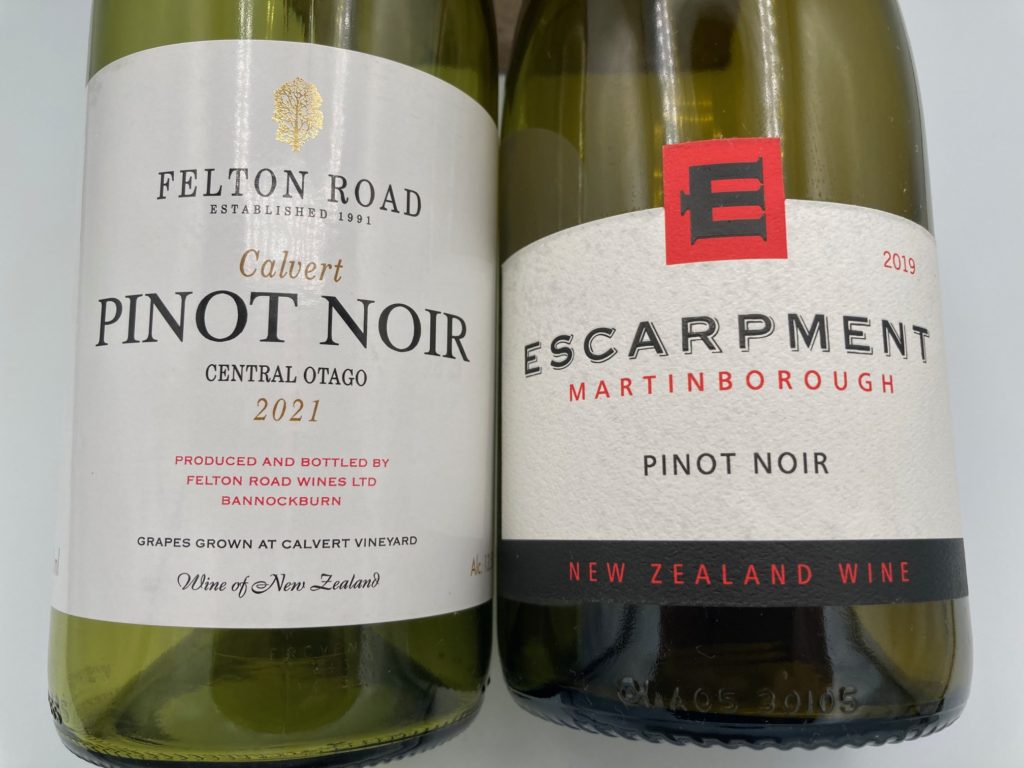
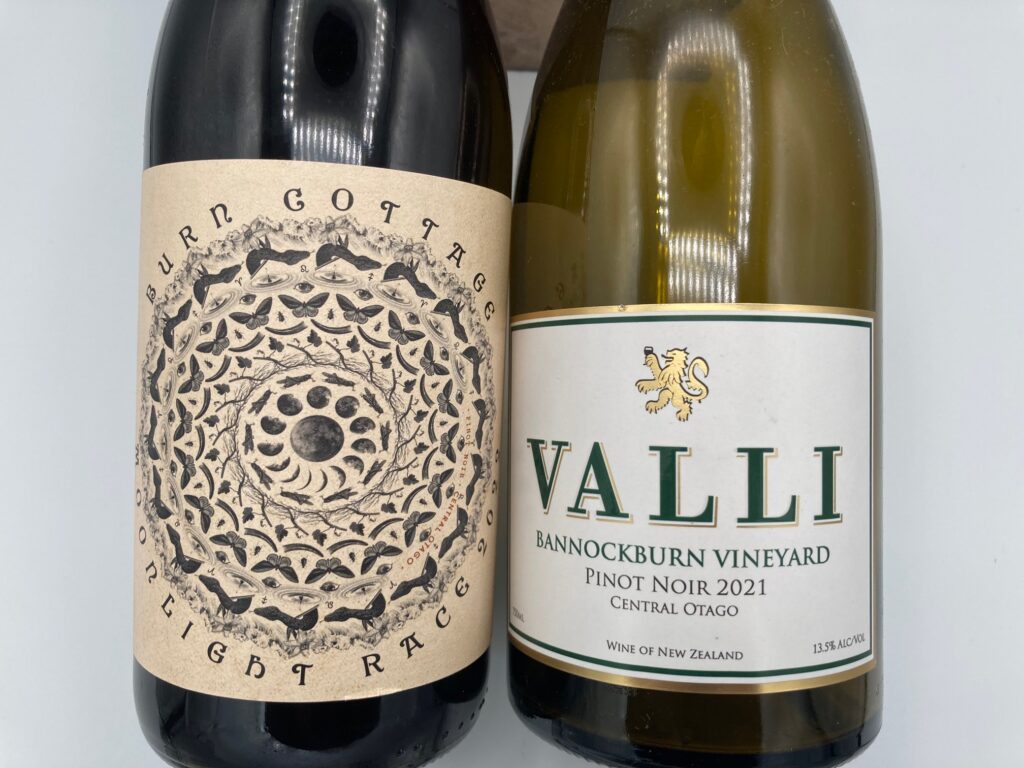
Felton Road is, perhaps, the most well-known, premium producer of Pinot Noir in NZ. This 2021 vintage from the Calvert Vineyard had lively fruit, but a bit too much sour cherry for our taste. Often available in the US are the Block 3 and Block 5 bottlings, their most expensive, richly-styled offerings. Our penchant for leaner Pinots, like those from the Sonoma Coast in the US, led us to Escarpment, Moonlight Race by Burn Cottage and Valli. The Valli Pinot is available from only one retailer in the US – K&L Wine Merchants in Redwood City, CA. The others are more widely distributed in the US, including some Total Wine locations. The Escarpment and the Moonlight Race are better values (about $40) than Felton Road, and are delicious, elegant expressions of Pinot Noir.
Influential background info: Escarpment, founded in 1998, was purchased by Australian winery Torbreck Wines in 2018. The winery is noted for their alluvial gravel soils and their high proportion of whole bunches in their fermentations. The Burn Cottage family, owners of a wine estate in Pfalz, Germany, convinced Ted Lemon of Littorai Wines in Sonoma CA to join their team. Ted’s influence led Burn Cottage to be the first vineyard in Central Otago to be farmed biodynamically. And Grant Taylor, founder and winemaker of Valli, helped establish Pine Ridge Winery in Napa as well as Archery Summit in Oregon. Taylor started Valli in 1998 and has won “Best Pinot Noir” an unprecedented 4 times at a major International Wine Competition in London.
Other NZ Pinot Noir bottlings that are “must taste”: Ata Rangi (Martinborough), Bell Hill Vineyard (No. Canterbury) and Fromm Clayvin Vineyard (Marlborough).
Syrah (plantings found in the red ellipses on the map)
Syrah plantings represent just 1% of NZ’s total vineyard area, yet this is the varietal that surprised and excited us the most, particularly those from the Marlborough region. Why? Because the wines from this northern part of the South Island are cool climate wines, delivering elegant, mid-weight structure with lively fruit and bright acidity (freshness). These wines are unlike the warm-climate blockbusters from Australia or Napa, and, thus, have a broader food-pairing range than those fruit/oak bombs.
We were particularly impressed by the Giesen Syrah ($88) from their Clayvin vineyard, the first hillside vineyard in Marlborough. We loved it for it’s softer attack, while still retaining the characteristic herbal, peppery palate. The finish was ripe fruit dominant, rather than oak and tannin. Think Pinot Noir elegance but with blackberry fruit and a dash of black pepper. Fromm Winery also bottles Syrah from this famous, clay-rich vineyard, but it’s not available in the US currently. Fromm’s winemaker comments: “Most benchmark wines are grown in marginal climates. Marlborough is marginal for Syrah yet it works every year.”
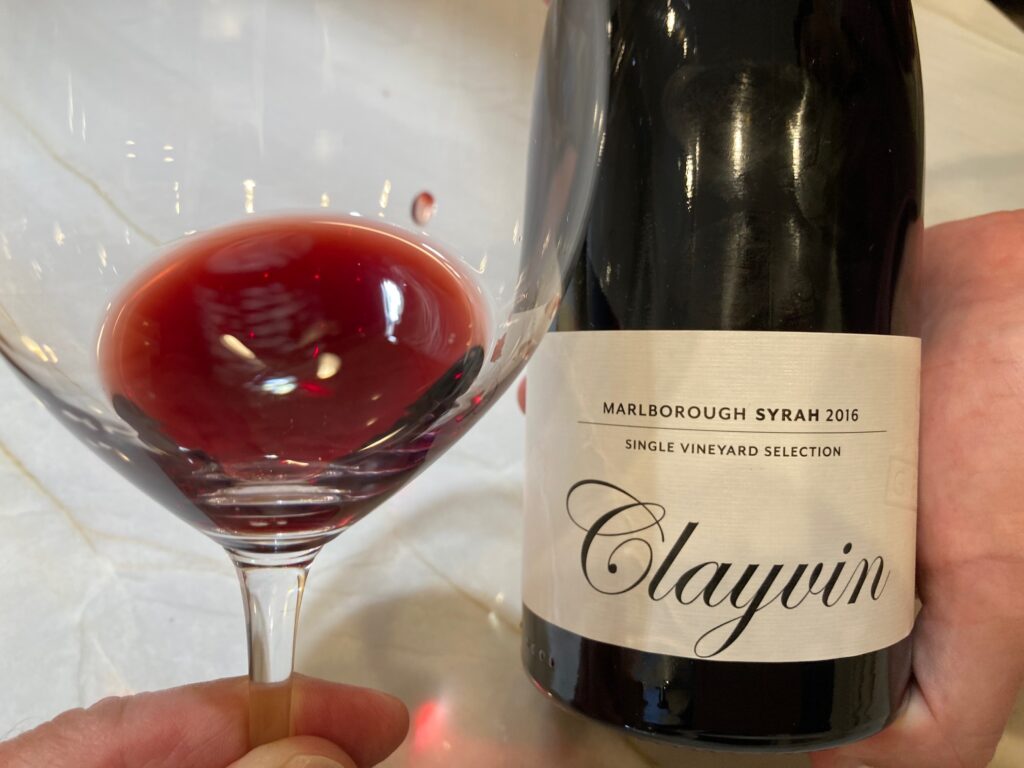
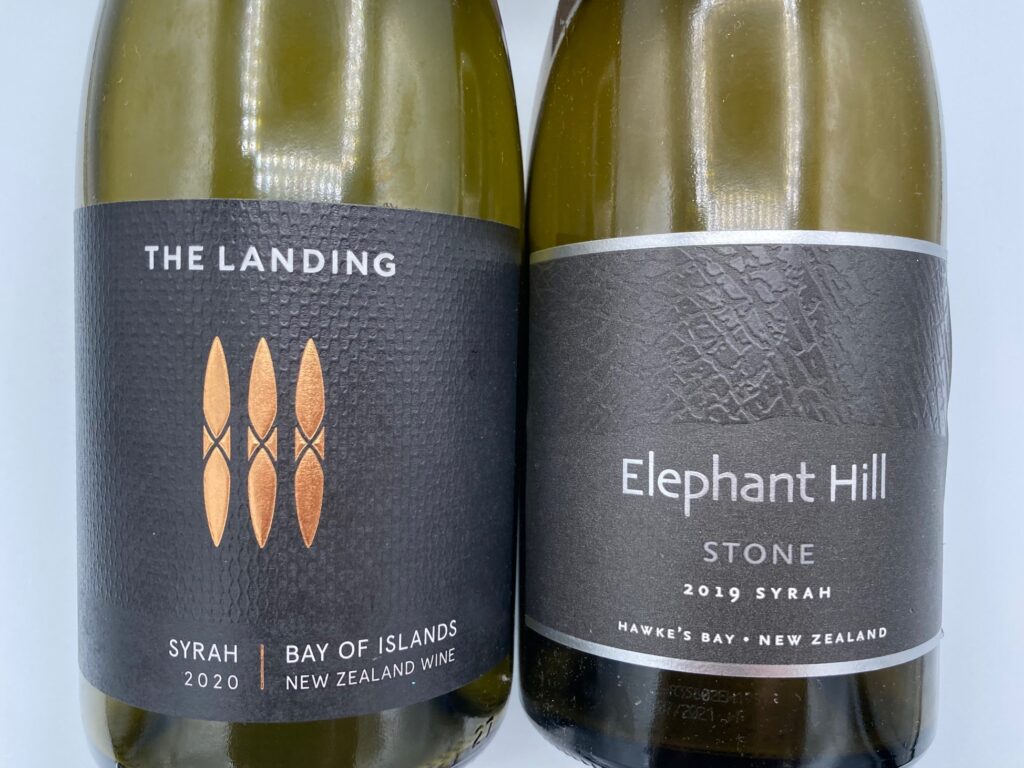
Syrah is also grown in the warmer climes of the North Island, from Hawke’s Bay to Northland. The two bottlings in the right-hand photo above are usually available in the US ($30 to $55), but lean more toward the traditionally-styled Syrah: rich, bold and fleshy with notable oak, damp earth and black pepper. Heavier and more tannic than the cool-climate Syrahs, these two bottlings are great for grilled meat, but too dominant for most other fares. Of course, there are notable exceptions, like the Quarter Acre Syrah and the Trinity Hill Homage Syrah, both from Hawke’s Bay.
Red Blends (mostly Cabernet Sauvignon and Merlot) (Red ellipses on the map)
Hawke’s Bay is also the home of New Zealand “Bordeaux Blends”, i.e., Cabernet Sauvignon and Merlot. These varietals make up one-quarter of all the vines planted in Hawke’s Bay, where gravelly soils (former river beds) resemble the right bank soils in Bordeaux. One of the finest of the blends we tasted was the Te Mata Estate Coleraine 2018 ($90).
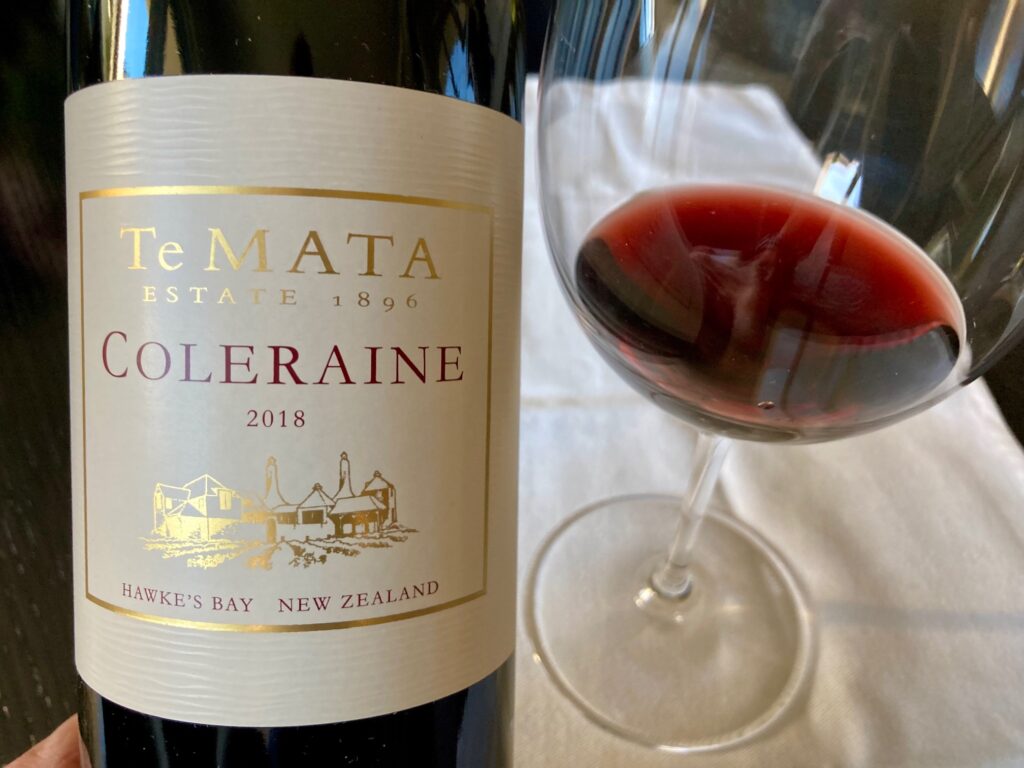

Our tasting notes on the Coleraine included “. . . classic Bordeaux nose, elegant, precise and exceptional finesse”. If a typical Napa Cab is a Ford F150, the Coleraine is an Aston Martin DB7. It’s no wonder that Master of Wine Rebecca Gibb considers Coleraine to be one of “NZ’s finest examples” and the “. . . closest thing to a Bordeaux-classed growth”.
Should your travel to New Zealand include a stopover in Auckland, by all means take a 40 min ferry ride to Waikeke Island to enjoy food and wine in a lovely vineyard setting. Be sure to include Te Motu and Man O’War winery visits, with lunch at Mudbrick Vineyard, Casita Miro or Tantalus Estate. And prior to your trip, buy a copy of The Wines of New Zealand by Rebecca Gibb MW – an expertly crafted, detailed study of the regions, wineries and tourism found in NZ.
Kia ora! (Cheers) . . . and safe travels.
Bruce E Kinney says
Makes me wish I would have had your review before our trip to NZ. I also took some great footage in Milford Sound, but didn’t see your link in the post. Happy Thanksgiving!
Steven says
I am having trouble with WordPress. The email sent to you was from their subsidiary, JetPack. In the upper right corner of the email you rec’d last night, you will see an instruction “View in Website”. Click on that and it will take you to my blog where you will see the videos, photos and map. Sorry for the inconvenience.